Pathfinder: Wrath of the Righteous is the latest isometric RPG from Owlcat Games, centered in Paizo’s Pathfinder tabletop RPG universe. Wrath of the Righteous is a follow-up to Owlcat’s first game, Pathfinder: Kingmaker, and attempts to provide the experience of playing through an epic tabletop campaign without the burden of having to gather all your friends around a table (or a Zoom call) every week.
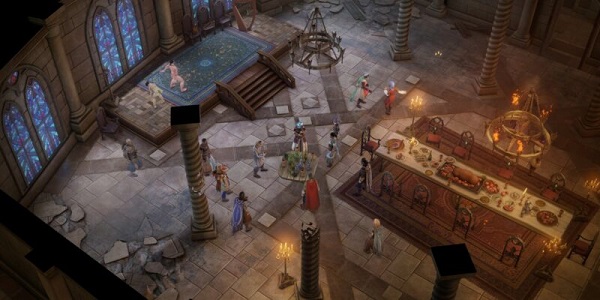
For the most part, the game succeeds, and if you’re already a Pathfinder fan, that’s probably everything you want to know. Wrath of the Righteous, at its best, faithfully recalls the joy of sitting down to play a Pathfinder adventure, except the game performs the majority of the work for you and looks fantastic doing it. It irritates you with bland writing, uninteresting combat, and buggy behavior at its worst.
Given Owlcat’s track record of patching and updating Kingmaker, which is now a substantially better game than it was in 2018, the bugs will most likely be squashed over time. But are Wrath of the Righteous’ other flaws enough to ruin the experience? I don’t believe so, and maybe this review will explain why.
Gameplay
From Baldur’s Gate to Pillars of Eternity, the Owlcat team admits to drawing inspiration from other isometric RPG series. If you’ve played those games before, you’ll be right at home with Wrath of the Righteous. The game gives you a bird’s-eye view of a six-character group and challenges you to follow them through the highs and lows of a traditional crusade.
However, I wish you could pull the view back a little further. Wrath of the Righteous’ 3D camera system allows you to rotate your viewpoint in a full circle and zoom in or out a respectable amount. Unfortunately, even pulling out as far as possible, the view feels a little more crowded than I’d prefer. I found myself continuously moving the camera around, less to scout the way ahead for potential threats and more to figure out where to click next. I needed a clearer sense of the world and where my characters fit within it.
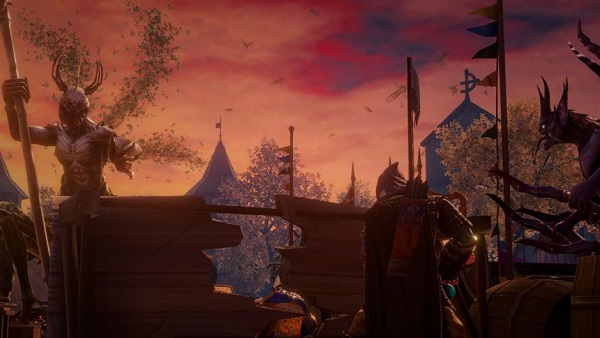
As the game progresses, you’ll spend most of your time navigating the protagonist you’ve created (or chosen from a choice of pre-generated characters) through the streets of Kenabres, a fortified city on the edges of the Worldwound, a demon-infested area. You’ll meet a variety of interesting people and creatures inspired by the pages of Pathfinder’s Wrath of the Righteous tabletop adventure game, many of whom you’ll have to dispatch in real-time or turn-based combat.
This is a big difference from Kingmaker, which only had real-time (with pausing) fighting until a fan modded in a turn-based option. This feature is fantastic since it allows you to customize how much you want to be involved in the battle. You can very reliably sic your party on most enemies on Normal difficulty and watch the combat play out in real-time, pausing sometimes to issue a precise order. When dealing with difficult opponents who require careful resource management or complex plans, you can switch to turn-based mode and micromanage your characters’ activities.
In its 2018 isometric RPG Pillars of Eternity II: Deadfire, Obsidian provided a similar choice between turn-based and real-time combat. On the other hand, you had to choose when you wanted to start a new game in that game, and you couldn’t switch back and forth on the go. I hope I never have to go back now that Wrath of the Righteous has shown me what it’s like to play a truly dynamic real-time/turn-based isometric RPG.
Crusade management
You’ll be able to leave Kenabres and begin leading your merry band of crusaders on adventures around the surrounding country if you’ve progressed far enough. This takes the form of a colorful map on a table, which is surrounded by small figurines. It’s quite pretty to look at an idealized tabletop gaming experience— you’ll be staring at the map screen for at least a dozen hours for a game.
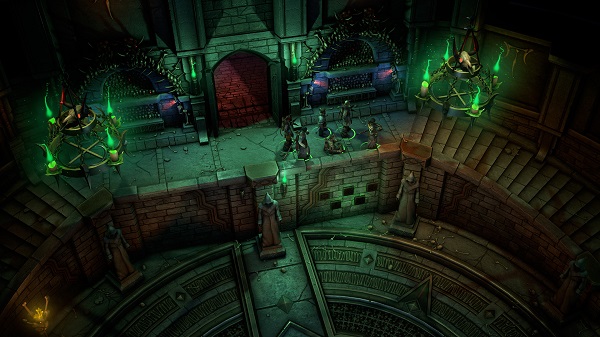
The Fifth Crusade’s resources and troops will take you much time to manage, which is an in-game war effort against a demonic horde. Making dialogue choices and going on side missions are also examples of this. This is moving armies around the map and spending Crusade-specific resources to hire warriors or construct structures in the areas you control most of the time.
The story will develop as you build up your armies and win battles. If you don’t appreciate army combat, which demands you and your opponent to take turns moving stacks of units around a grid-based battlefield, this can be aggravating. (Owlcat admits that this mode is a nod to the Heroes of Might & Magic franchise.)
You can enable an auto mode if you don’t want to deal with the crusade management stuff, which will free you up to focus on the adventure portion. This mode may be worthwhile to use as well because I believe you must appreciate army battle to enjoy it for dozens and dozens of hours. Army battles may also belong, boring, and drawn-out affairs, however, you can have them auto-resolved instead of having to play them out yourself.

I prefer both isometric RPGs and Heroes of Might & Magic games, so I feel the two tiers of gameplay are approachable and enjoyable. However, if this is your first time playing a game like this, I expect a steep learning curve in the early stages of your crusade. This is particularly aggravating because a few terrible losses will quickly deplete your resources, leaving you unable to battle effectively.
Fortunately, Wrath of the Righteous includes a comprehensive set of in-game tutorials. It also has a variety of difficulty levels and modifiers that you can adjust on the fly, allowing you to reduce the difficulty anytime it becomes too challenging.
You should utilize it whenever you need to, because Wrath of the Righteous, like the Pathfinder tabletop RPG, has a dizzying assortment of character races and classes to select from. It’s all too simple to come up with a cool character concept on paper just to have them torn apart in particularly difficult battles. Unless you choose to play the game that way, it’s better to design a character who offers an interesting perspective on the story of Wrath of the Righteous than it is to build the best demon-killing machine.
Story
When it comes to plot and characters, Wrath of the Righteous has plenty of both. Despite spending well over 30 hours on the game, I’m just halfway through the second chapter. Ahead of me are still hundreds of quests, based on the 120+ hours I spent into Kingmaker.
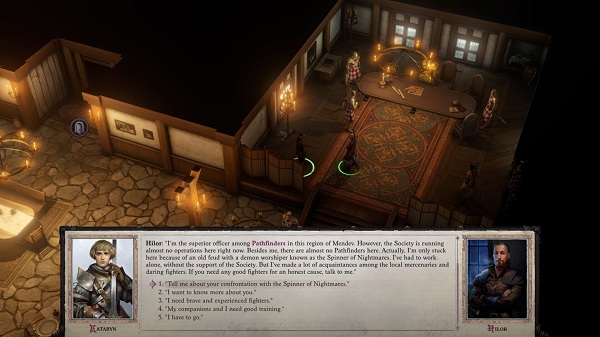
The writing has been effective thus far, but it hasn’t been really shocking or fascinating. Many of the characters your protagonist meets first appeared in the published Pathfinder adventure path, and many of them aren’t very memorable or engaging. The companions you can add to your team are the exceptions. They all seem to have complicated backstories, and side quests that you can choose to investigate or ignore.
Wrath of the Righteous uses the trappings of an honest-to-goodness battle against demonkind to examine delicate problems of good vs. evil, love vs. duty, and law vs. chaos and the companions all have their own unique viewpoints on the narrative. Of course, because this is an isometric RPG, your character will swiftly level up and collect a variety of superhuman skills, which you may use to easily solve most puzzles. It appears that viciously murdering anything that crosses your path is the only way to play a character with an evil alignment in the game.

You’ll come across dialogue options with signs like [Evil] or [Lawful] throughout the game and the game will record your actions after you choose them. Many games have similar features, but few go far enough to make playing a wicked character appealing or even believable. I’ve yet to see a [Evil] choice in Wrath of the Righteous that is more sophisticated than “attack this person right now, right now, for little to no reason.”
I’ve found the writing to be a little more monotonous and less interesting than I’d prefer. Wrath of the Righteous has a lot of good content, especially when it comes to companion quests. Many of the major plot beats will resonate with anyone who enjoys sword-and-sorcery adventures. But, more often than not, I find myself skipping over large swaths of text that make my eyes glaze over when they should be drawing me in, fast-forwarding through dialogue, skimming conversations for the most important bits, and skipping past large swaths of text that make my eyes roll over when they are drawing me in. It’s adequate for the job, but considering how invested I was in similar games like Disco Elysium, Tyranny, or Pillars of Eternity II: Deadfire, the sheer volume of boring prose in Wrath of the Righteous makes me a little uncomfortable.
Sound and Visuals
Pathfinder: Wrath of the Righteous, like Kingmaker, has a mix of voiced and unvoiced dialogue, and I’ve enjoyed the performances so far. The majority of the voiced dialogue is convincing, and there are a few genuine laugh-out-loud moments. All of this is backed up by a strong soundtrack that enhances rather than distracts from the action.
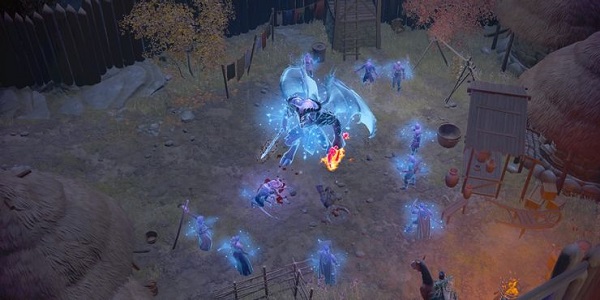
Many of the voiced characters have beautifully illustrated portraits, and the game has a high level of detail throughout. Although this game’s character models still have a cartoonish appeal, they are more realistic than those in Kingmaker.
The weather and spell effects are impressive, and the dynamic lighting adds to the diorama-like environments’ realism. The user interface is stunning, with tons of vibrant colors and design features that make you feel like you’re sitting around a table planning a massive campaign.
Verdict
If the idea of creating a character and immersing yourself in an 80-hour fantasy RPG appeals to you, Pathfinder: Wrath of the Righteous could be just what you’re looking for.
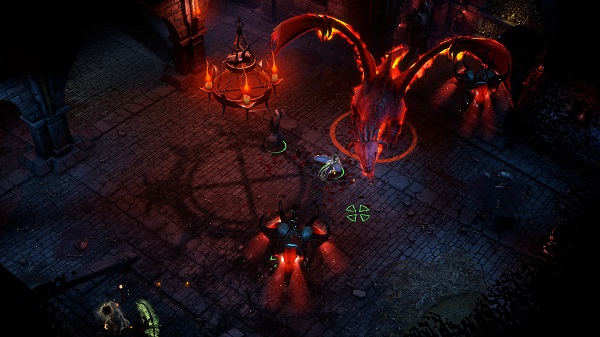
Owlcat Games’ sophomore effort is a gorgeous love letter to tabletop RPGs, evoking the same mix of curiosity and excitement that I felt when I first played D&D. Wrath of the Righteous, like a tabletop RPG campaign, maybe tiresome and monotonous at times, with writing that feels empty and bland.
If the prospect of a high-fantasy isometric RPG doesn’t thrill you, a game like Disco Elysium or Wasteland 3 might be more interesting. However, if you’re looking for some good old-fashioned demon-slaying fun, Pathfinder: Wrath of the Righteous has more dragons and demon lords than you can shake a twenty-sided die at.



















